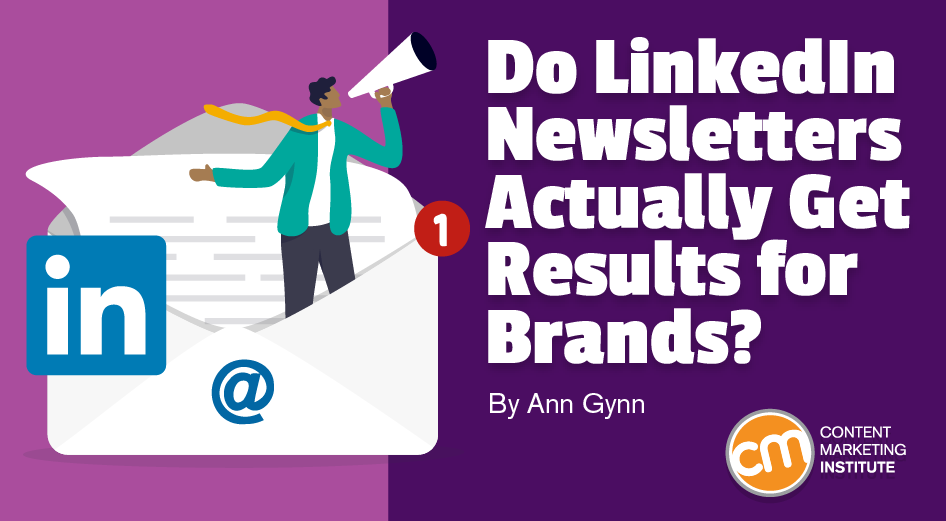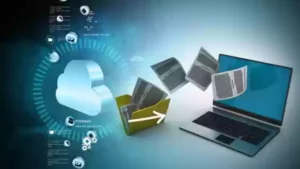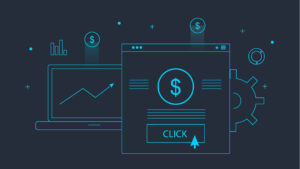
The notifications keep popping up in the My Network section of my LinkedIn account. But they’re not the usual request to connect. Instead, they’re invitations from people asking me to subscribe to their newsletters.
I received six click-to-subscribe requests on one recent day. I’d already subscribed to a newsletter or two through the platform. Why the sudden onslaught of requests? Did everybody realize the power of newsletters at the same time?
The answer was simple: LinkedIn expanded its newsletter creation feature to more people recently (and will continue to roll it out to even more in the coming months.)
I started to wonder: Do (personal and corporate) brands find these newsletters beneficial? How hard are they to create?
To answer these questions (and more), I turned to brands and agencies who use the LinkedIn newsletter, one of the people who worked on the newsletter feature, and LinkedIn’s published guidance.
Connect through conversations and ideas
The LinkedIn newsletter capability grew naturally from the platform’s articles feature, according to Lorraine K. Lee, who served as editorial lead for the LinkedIn newsletter product launch.
The idea is to help the LinkedIn audience stay up to date on topics and conversations important to them through content created by the people they’ve connected with and brands they follow. It also gives brands and other newsletter creators the opportunity to connect with their followers on topics they are (or want to be) known for.
Lorraine advises any brand or individual to focus on content that’s genuine and open. “A company that’s writing a newsletter each week sharing high-level policies or updates isn’t going to get a lot of traction.
A company that shares employee stories or struggles the HR team faced when implementing remote work policies is.”
“Any time you can tell a story and show what’s behind the curtain — that’s what will help you engage and grow your audience,” says Lorraine, who now heads editorial at Prezi.
Tell a story and show what’s behind the curtain to engage and grow your @LinkedIn newsletter audience, says @lorraineklee via @AnnGynn and @CMIContent. Click To Tweet
Get results with repurposed content
Andy Crestodina, co-founder of Orbit Media, created Digital Marketing Tips on LinkedIn when LinkedIn made the newsletter option available by invitation only. The results have been crazy, he says. In the first 10 months, he gained over 100,000 subscribers. Today, more than 118,000 people subscribe to the weekly LinkedIn newsletter.

His motivation was simple – he wanted to get more value from older blog posts. “Virtually all of our content is evergreen, so I had a virtual assistant start moving old articles into LinkedIn to give them exposure to a new audience. They required very little adaptation, so it was a near-zero effort,” Andy says.
Each LinkedIn newsletter article is about half or two-thirds of the original, with a call to action to read the rest on the Orbit Media website.
The strategy paid off in increased traffic to the Orbit Media website. Since introducing the LinkedIn newsletter in early 2021, more than 10,056 visitors have come to his site from LinkedIn, and almost 90% of them were new visitors.

“For years, we warned against building on rented land,” Andy says, “but when the location of that rented land is amazing and the cost is low, you should go ahead and rent.”
A @LinkedIn #newsletter strategy based on repurposed #content worked for @Orbiteers. So go ahead and rent if the location is amazing and the cost is low, says @Crestodina via @AnnGynn and @CMIContent. Click To Tweet
Tweak content for the platform to earn subscribers and leads
Christina Daves, president of CastMedicDesigns, launched the Get PR Famous newsletter on LinkedIn and now has over 2,500 subscribers. (Get PR Famous is also the name of a course and live event she created.)
“I am repurposing content by taking old articles or blog posts and updating them. I also include YouTube videos I’ve done in the past that will help with that particular topic,” she says. “I’m a huge proponent of reusing your content and not always reinventing the wheel. You just need to tweak it specifically for this audience and the topic you’ve chosen.”
Christina says she’s been blown away by the results. She publishes twice a week and averages 1,500 to 2,000 views per newsletter – about 10 to 20 times more than she gets on regular posts. Each newsletter also nets her one or two consultations with prospects.
“More and more people are jumping on board, which will dilute the excitement and newness of this type of content. (But) provide great content, and people will stay with you,” Christina says.
More people are creating LinkedIn newsletters, which could dilute excitement. But if you provide great #content, people will stay with you, advises @PRforAnyone via @AnnGynn and @CMIContent. Click To Tweet
Test which format readers prefer
VEM Tooling made LinkedIn its primary newsletter distribution platform based on the surge of readers and positive reactions it received, according to Sales Director David Reid. He says subscribers find the LinkedIn newsletter format more comfortable and enjoyable than traditional email newsletters, though both formats feature the same content.
As far as a marketing tool, David says, VEM has found more success with its LinkedIn newsletters because it reaches a broader audience and allows them to see reactions from readers who click on like and other emojis or write comments. (LinkedIn newsletters also are less likely to get stopped by spam filters than traditional email newsletters, he says.)
How to get started
The first step in creating a LinkedIn newsletter is to see if the option is available to you. To find out, go to the Creator hub by visiting the Resources section of your LinkedIn profile page. Here you will see if the newsletter feature is available:

According to LinkedIn, the newsletter creator access is available to members (and brand pages) that have:
- At least 150 followers or connections
- Recently shared original content
- Agreed to adhere to its professional community policies
(Note: Creator mode will affect your profile appearance, moving the Activity and Featured sections before the About section. It also allows you to use hashtags underneath your title.)
From there, the process is simple. At the top of your LinkedIn home page, click “Write an article.” Create the content and then click “create a newsletter.”

LinkedIn offers these tips as best practices:
- Choose a name that clearly describes your newsletter’s content focus.
- Make sure to include your logo in the newsletter and a cover photo for each article.
- Be direct in your article headlines.
- Engage subscribers by adding a few lines of commentary or asking a question when you share the newsletter.
Once you publish your first newsletter, LinkedIn automatically sends a newsletter invitation that includes your name and newsletter title to your connections and followers. You also receive a dedicated newsletter page link you can share on LinkedIn and other social media platforms.
Another tool for your content kit
LinkedIn newsletters offer an option for delivering content to and interacting with a community that may not want another email newsletter popping up in their inboxes.
Even if you aren’t the earliest bird to the LinkedIn Newsletter feature, you can still test the tactic to see if it helps your content fly further and attract a wider audience.
Cover image by Joseph Kalinowski/Content Marketing Institute




